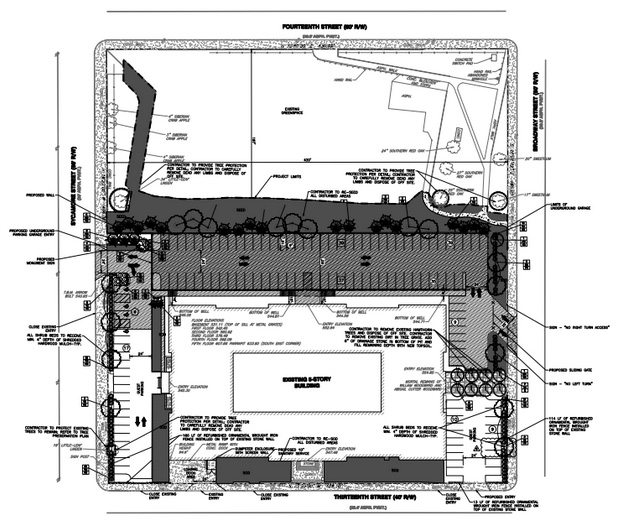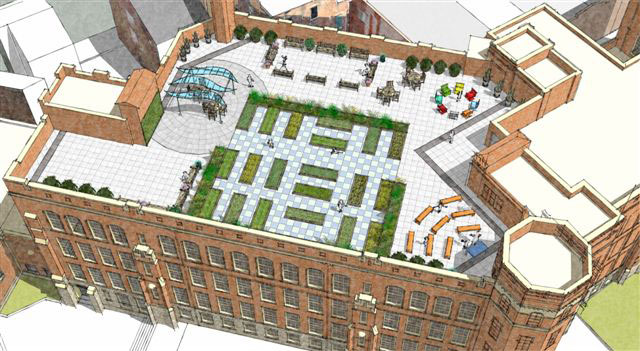On Monday evening, the Pendleton Neighborhood Council voted unanimously to support Core Redevelopment’s $24 million Alumni Lofts project, provided the green space north of the former Woodward School/School for Creative and Performing Arts building remain undeveloped and available for public use.
The council’s letter of support asks that any development agreement between the City and the Indianapolis-based developer, or any future owners or assigns, include provisions that the Cutter Playground property be donated to a nonprofit or governmental entity and that development restrictions, such as a conservation easement, be included in the contract.
The developer’s current plans call for a two-level parking structure on part of the nearly three-acre site, leaving between 80-85% of the original green space intact.
Developer Michael Cox with Core said that he’s unsure whether the green space will be managed by his company or donated, but said that his company is committed to the community’s goals.
“We don’t know which one yet, simply because we haven’t worked through all of the deal structure and the timing of all of that,” he said. “It’s a pretty complicated project that we’re doing, but we are committing to the City in our project agreement with the City that we will do one of those things with the green space and it will be a green space in perpetuity.”
Alumni Lofts will consist of 142 market-rate apartments, ranging from 480 to 2,000 square feet and leasing for between $699 and $1,400 a month.
Still undergoing demolition and prep work, construction on the new units has been bid and is ready for permitting pending Council approval. A leasing office is planned to open in January or February, and Core expects to welcome its first tenants by July 1, 2016, Cox said.
The development agreement will be presented to City Council’s Budget & Finance Committee on June 8.
Under terms of the agreement, the project would receive indirect City assistance through a 30-year tax increment financing (TIF) rebate program, which Senior Community Development Analyst Adam Sickmiller said is “completely unique” for the region.
“From the developer’s perspective, it’s effectively a net 67.5% tax rebate,” he said. “So the developer will pay their taxes. Twenty-five percent will go to the schools, and 7.5% will go to the streetcar operating fund.”
The remainder would be returned to the developer, which will allow Core to receive a bigger bank loan to construct the parking structure, Sickmiller said.
“If the project performs better than expected, there will be a sharing of that revenue between the developer and the City,” he said. “Where specifically this money is going – and one of the reasons that we’re pretty excited about this – is that it’s going into an account that will specifically be used for public improvements, urban redevelopment, and public infrastructure, parks and the like.”
Opened in 1910 as the second Woodward High School, the 225,000-square-foot building has been vacant since 2010, when SCPA moved to its new $72 million building on Central Parkway.
Core bought the school for $1.3 million in late 2012 at an auction of vacant Cincinnati Public Schools properties.













